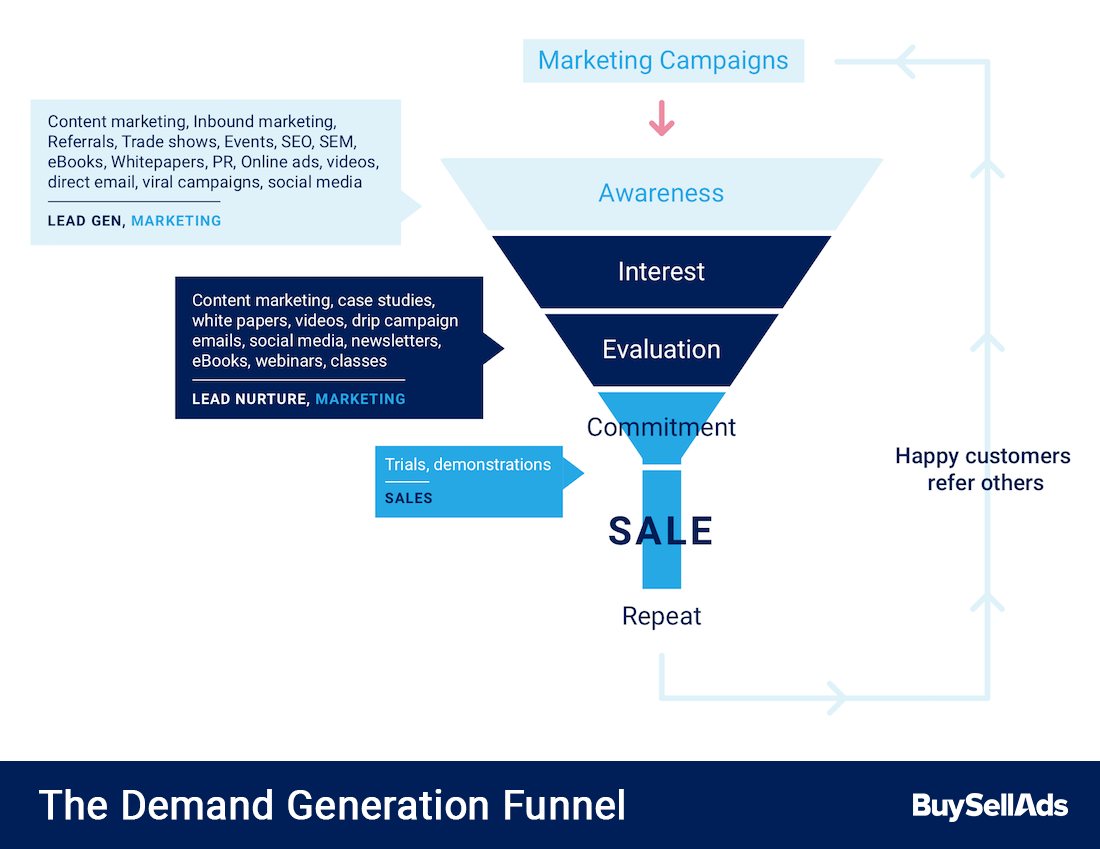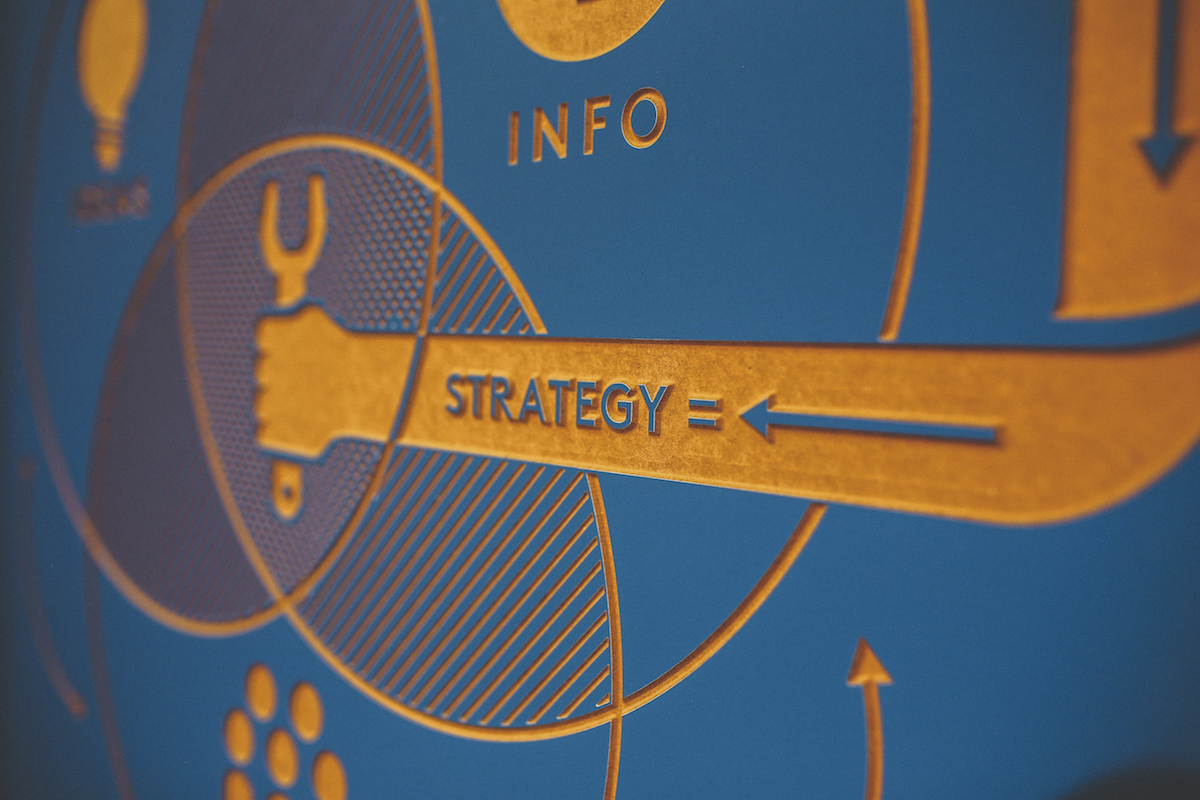As interest in demand generation skyrockets, many marketers are left wondering what demand generation is and how it compares to lead generation and inbound marketing. After all, they all deal with creating interest for a product or service in some regard.
Let’s start by defining demand generation marketing and breaking down its three major characteristics.
What is demand generation?
Demand generation marketing creates need for a product or service with the goal of passing qualified leads to the sales team.
I like to think of demand generation as the combination of different marketing strategies to create a streamlined approach to finding and converting customers. This includes the marketing funnel, sales process, and lead nurturing.
Marketing/Conversion Funnels
Demand generation covers the entire marketing process from awareness to sale. It’s a holistic, usually lengthy approach made up of different touch points and tactics.
Most demand generation marketers use the trusted marketing or conversion funnel to visualize strategies. This clarifies how demand generation covers the entire funnel from top to bottom, including how marketers plan on re-engaging past customers to make more sales.
A good demand generation funnel explains which platforms are used at different parts of the strategy, which steps a lead has to complete before being passed on to sales, and how unqualified people are churned out along the way.

Relationship with sales
Demand generation links marketing activities to sales successes by attaching the end of the marketing strategy to the top of the sales funnel.
Unlike other approaches, demand generation marketers are focused on sending only the most qualified, valuable leads to sales. This is done by refining the funnel to attract more qualified leads at the top and churn out unqualified ones in the middle.
Demand generation isn’t about creating the biggest pipeline in the world—it’s about creating a sustainable flow of qualified leads for your sales team.
Marketing automation
Demand generation strategies tend to have several steps spanning different platforms and timelines. As a result, marketers lean on automation to move people through the funnel and scale efforts.
This is called lead nurturing, and email marketing and targeted content usually shines here. Knowing where leads are in the funnel, what information is relevant to them at a certain moment, and how likely they are to buy based on activity is best done with automated tools.
Demand generation vs lead generation
Demand generation and lead generation seem similar at first glance. Both want to raise awareness of a product or service, and both want to drive new leads into the sales pipeline.
But there are actually important differences between the two approaches:
- Lead generation ends once information is exchanged. Demand generation goes the extra mile by qualifying the lead. Lead generation is one part of a demand generation strategy, serving as a top-funnel goal. On the other hand, demand generation spans the entire marketing funnel including the steps needed to nurture leads until they’re ready to buy.
- Demand generation strategies tend to be more obsessed with lead quality. Lead generation means different things to different campaigns—often times it’s a numbers goal or it can have an end purpose other than sales. With demand generation, there’s more of an emphasis on getting the best leads at the top of the funnel as it means more customers will be ultimately passed on to sales.
Demand generation vs inbound marketing
Marketers often confuse the relationship between demand generation and inbound marketing.
Inbound marketing is usually part of a demand generation strategy, and most companies use inbound and outbound marketing to create demand at the top of the funnel.
Inbound marketing is a set of tactics that draw people into your business like a magnet. This can include blogging, SEO, social media, and many more. On the other hand, outbound marketing is made up of tactics used to reach out to customers such as advertising, cold outreach, or event sponsorship.
In this way, inbound can be interpreted as a referral path or set of tactics that contribute to goals but don’t represent the entirety of the demand generation strategy.
Demand generation is a holistic marketing approach
Demand generation covers all touch points on the path of turning a stranger into a customer. Just remember, lead generation and inbound marketing are parts of demand generation even though they share similar goals.
Want to learn more about demand generation strategies? Check out our starter guide to creating your own.

